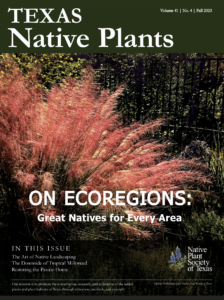By Jerry Winakur, Fredericksburg Chapter
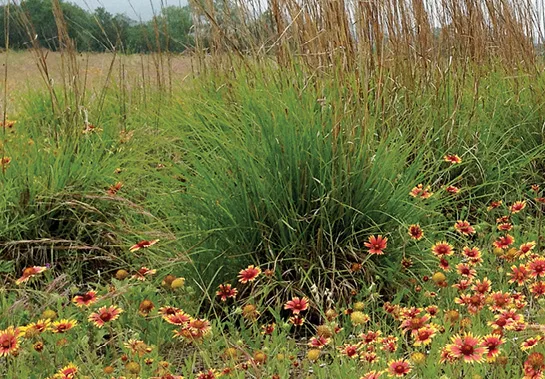
In 1999, my wife and I bought an old, broken-down, overgrazed 100-acre ranch on the Edwards Plateau outside of Comfort, Texas. We named it “Canyon Wren Ranch.” We are at the extreme eastern edge of this bird’s range, but they love the cliff faces along our creek, and the old rock walls the Germans built as they cleared their land for agriculture.
Our 100 acres has a couple of ponds dammed along a seasonal creek that empties into Block Creek which borders the eastern edge of our property and flows into the Guadalupe River a few miles to the southeast. Several large fields were once planted in introduced grasses–King Ranch Bluestem (Bothriochloa ischaemum) and others–for livestock foliage.
The majority of the ranch was fenced to eight feet. Exotic game (black buck antelope, axis, and fallow deer) had been introduced to entice hunters. Before that, the owners raised cows, sheep, horses, and goats. Frankly, the place was a wreck when we bought it. Bare ground, dirt, and rocks were our legacy.
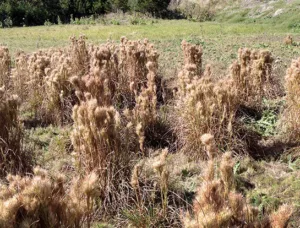
Texas does offer a way for owners to conserve their land by allowing them to change the tax status of their property from “AG Exempt” (which means raising a food or animal crop) to “Wildlife Management.” I decided to develop a Wildlife Plan and restore my remnant of a mostly lost ecosystem: a tallgrass southern prairie. I wanted to hear the sounds of bobwhite–now mostly gone from the Hill Country–calling for each other. I hadn’t heard one in a long time.
Of course, the herbivores had to go. My neighbors and hunter-friends thought I was deranged when I requested their help removing the white-tailed deer and other exotics inside my high fence. With all of the drought years we’ve had recently, the task of establishing native grass plantings was particularly challenging.
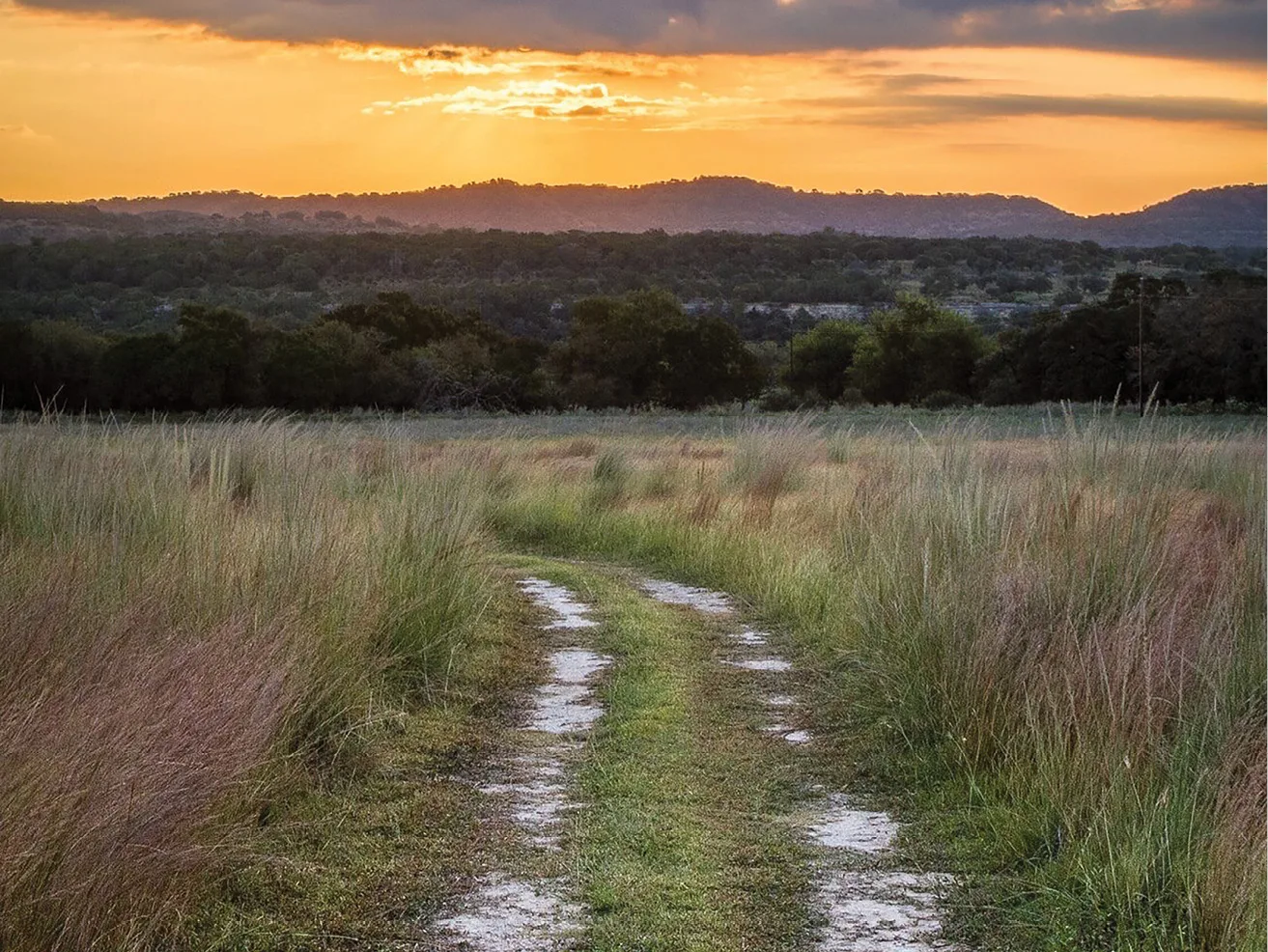
Fortunately, I managed to locate a native grass clump here and there, and I began to harvest seeds. Then I had to learn to grow them, with lots of research and trial and error. I now have the capacity to grow 7500 seedlings at a time. A lot of them never come up. Getting them into the ground is hard work. Even with the large herbivores gone, I’ve found I get much better success keeping out rabbits, etc., If I fence a small area first. Still, I lose a fair number of the tender young plants.
The plantings are done in the fall to take advantage of winter rains and cooler temperatures. It is a real thrill to watch them develop into mature plants over the next one to two years.
I’m always amazed how they take to the rocky, alkaline/caliche soil–adaptation over millennia is a pretty spectacular thing!
This project began more than 20 years ago. I wish I were further along, but my health and lack of rain have slowed us down. Yet, my prairie now has a life of its own. We have identified over 80 species of grasses so far and 200-plus species of birds, including even the occasional bobwhite. With grazing pressure off the forbs, the wildflowers are coming back. So far, we’ve identified 150 species of wildflowers on the place.
Texas Parks and Wildlife put out a call a few years back for private landowners in the Hill Country to open their ranches to the public. Texas is poor in government-owned parkland–97% of Texas is in private hands. I contacted their biologists who came by for a visit. They liked what they saw. So, Canyon Wren Ranch is now listed on the Texas Heart of the Hills Wildlife Trail Map–a state-sponsored ecotourism promotion.
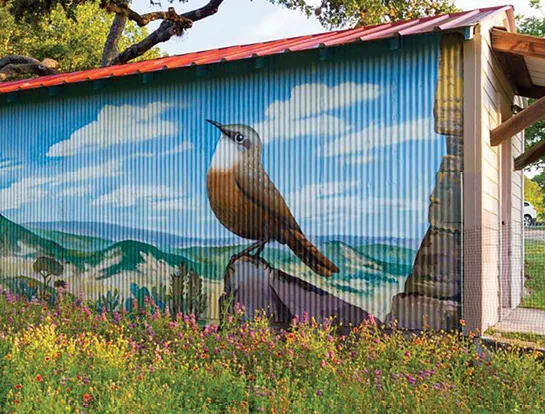
Just imagine if local nature groups and conservation clubs–and here is where the Society comes in–county, state, and federal agencies, the Audubon Society, and the Nature Conservancy nationally all worked together to reduce the dire ecological consequences of our age.
Whether we live on a lot in the city, the suburbs, or, a farm or ranch, we can all do something to maximize the biodiversity of our world and keep Texas beautiful.
From above, to the indigo bunting migrating back to north America some spring in my great grandchildren’s time, it is my sincere hope that my piece of the prairie will look like home.
Jerry Winakur can be reached at jwinakur@aol.com.
Did you like this article? It’s from our Fall 2023 Texas Native Plants magazine. Read more here
